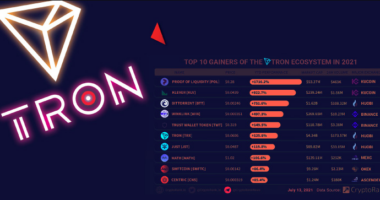HashFlare is a cloud mining service that pays out in Bitcoin. It allows users to earn Bitcoin by renting out their computer’s processing power. It is a service that turns your computer into a mining machine. The mining is not done by the customer but by the service. The customer will receive the Miner return for completing the job. That is the service will mine for you.
HashFlare is one of the most popular cloud mining platforms today. In this HashFlare review, we will talk about its main features, profitability, and its security. HashFlare is a cloud mining service that offers mining contracts for various cryptocurrencies. The mining contracts available are SHA-256, Scrypt, X11, X15, X17, and X19. Some of them have a lifetime of 1 year, 2 year and 3 year respectively.
HashFlare is a cloud mining platform that offers a wide range of services and solutions designed to help customers earn Bitcoins. On the HashFlare platform, customers get access to a number of mining options that include bitcoin mining, litecoin mining, as well as other options that include cloud mining, as well as other options that include cloud mining, as well as other options for earning Bitcoins.

HashFlare was built on a strong foundation, and until 2017, this framework was more than capable of adjusting to the heap. In any event, given the growing ubiquity and rising prices of digital forms of money, demand for them has exploded, and the number of our customers has grown significantly as well. We used to receive 15,000 to 20,000 new customers each month, but now we get up to 100,000 every now and again.
At the time of writing, our website has 1,495,737 registered users. The mound atop the worker continues to grow, making it more difficult for the worker’s robust design to react. Despite the fact that we are always streamlining our code and auditing our methods for dealing with various approaches and their effectiveness, it may still leave us with a limited amount of time to work on form 2.0.
In March 2017, we made the decision to switch to a microservice architecture. This will allow us to grow the program effectively, balance the heap across the framework’s many important modules, and greatly speed up administration.
Review of HashFlare Review of HahFlare
We’re finally getting serious about putting together a foundation for version 2.0. HashFlare’s current version was developed in PHP, however HashFlare 2.0 will be built on Java. Our goal is to focus on API management from both the front-end and back-end perspectives. Indeed, we’re considering making our API as accessible as possible to outside developers, allowing them to create a plethora of alternative HashFlare-based products. Telegram bots, versatile applications? Put it out of your mind anytime you want. To sum it up, the new HashFlare is receiving more than just a makeover; it’s also getting an inner spring clean. Its cutting-edge patched-up plan is just a glimpse of something bigger: you’ll find yourself working in adaption 2.0, and its dashboard is a lot easier.
It’s been more than a month since HashFlare’s temporary suspension of SHA-256 mining, which means the time has come to provide some insight into the situation, explain the reasons behind this decision, and address the main concerns that have been plaguing HashFlare’s customers for some time.
In-Depth HashFlare Analysis
HashFlare was built on a strong foundation, and until 2017, this framework was more than capable of adjusting to the heap. In any event, given the growing ubiquity and rising prices of digital forms of money, demand for them has exploded, and the number of our customers has grown significantly as well. We used to receive 15,000 to 20,000 new customers each month, but now that number fluctuates between 100,000 and 150,000.
At the time of writing, our website has 1,495,737 registered users. The mound atop the worker continues to grow, making it more difficult for the worker’s robust design to react. Despite the fact that we are always streamlining our code and auditing our methods for dealing with various approaches and their effectiveness, it may still leave us with a limited amount of time to work on form 2.0.
In March 2017, we made the decision to switch to a microservice architecture. This will allow us to grow the program effectively, balance the heap across the framework’s many important modules, and greatly speed up administration.
We’re finally getting serious about putting together a foundation for version 2.0. HashFlare’s current version was developed in PHP, however HashFlare 2.0 will be built on Java. Our goal is to focus on API management from both the front-end and back-end perspectives. Indeed, we’re considering making our API as accessible as possible to outside developers, allowing them to create a plethora of alternative HashFlare-based products. Telegram bots, versatile applications? Put it out of your mind anytime you want. Finally, HashFlare Review, the new HashFlare isn’t only receiving a fresh coat of paint on the inside; it’s also getting a makeover. Its cutting-edge patched-up plan is just a glimpse of something bigger: you’ll find yourself working in adaption 2.0, and its dashboard is a lot easier.
Hashflare’s most recent update
Hashflare, a purported “cloud mining” service that allowed investigators to successfully lease processing power on the Bitcoin network, said on Friday that it had shut down its Bitcoin mining equipment and terminated associated agreements. The company maintains the withdrawals are in accordance with its terms of administration, HashFlare Review but many customers are also reporting that the organization has implemented strict new withdrawal restrictions, reinforcing long-held allegations that the activity isn’t legal.
What part of Hashflare do you like the most?
Hashrates This mining is very easy to use, despite the fact that transferring the individual image is an interaction that I don’t see well, but what I enjoy is that reasonable advantages are created following your first investment you receive gains. Without mentioning how substantial this mining is, 6 to 8 months after the fact
What about Hashflare irritates you?
I’ve made a profit with this cloud mining, therefore there’s no reason why I shouldn’t despise the fact that their maintenance costs are rather expensive, and I’d like to have other digital currency options to mine.
Suggestions for those considering the item:
More cryptographic money mining options to put resources into the many choices that exist in this universe of digital currency is a suggestion to this application.
What problems do you think the Hashflare Review is addressing? What benefits have you realized?
Perhaps the most valuable benefit that Hashflare has provided me is the assurance of investing resources on a secure website, as well as a fair return in BTC after my first purchase of mining power. Continue reading
Hashflare is a cloud mining service that began operations in 2014. Since then, it has become one of the most popular cloud mining services in the market. Hashflare is one of the first cloud mining services to provide mining contracts in genesis-network difficulty. Hashflare offers a cryptocurrency mining contract for users who want to mine Bitcoins. Before investing in Hashflare, be sure to read our detailed review, and check out the hashflare pricing and hashflare profit calculator.. Read more about hashflare refund and let us know what you think.
Related Tags
This article broadly covered the following related topics:
- hashflare review
- hashflare
- genesis mining
- best cloud mining
- cloud mining


